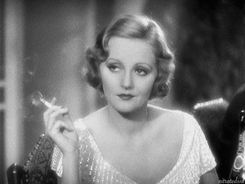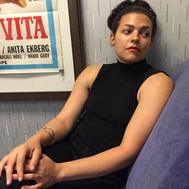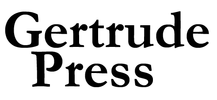|
The Damned Don’t Cry—They Just Disappear: The Life and Times of Harry Hervey lifts a forgotten Southern writer from the obscure archives where he’s been trapped for nearly seventy years, in dire need of a gossip column mention and a Singapore Sling. Harlan Greene’s biography is the first book to thoroughly assess Hervey’s early short fiction, novels, and the impromptu voyages to Asia that inspired them; it is also the first to acknowledge his swishy influence on Golden Age screenwriting.
Hervey’s life was an astounding one. Lasting only 51 years, his existence was defined by wanderlust, a cycle of critical acclaim and destitution, repeated chameleoning to fit America’s shifting attitude about homosexuality, and a god-given knack for self-promotion. Born into a family of hotel mongers in Beaumont, Texas at the dawn of the 20th century, as a boy Hervey possessed an early love for reading and an unrelenting imagination that would’ve been considered unwieldy had he been raised anywhere else but the American South. The Hervey family gradually migrated east to Mobile, Alabama. The youngster’s nonstandard sense of gender, as the domestic-obsessed playwright Tennessee Williams and unscrubbed novelist Carson McCullers would later on, was enabled by region’s identity—specifically, its festivities. As author Flannery O’ Connor famously quipped years later, “I am if you ain’t.” In Hervey’s case, the local carnivàle offered opportunities for self-expression and exploration: During these celebrations encouraging outrageousness and excess, a dreamy feminine boy like Harry could indulge his penchant for fancy dress without fear of being punished for donning women’s clothing or other costumes. Early on in his precocious career, Hervey began packaging his yearning for other men within the female form in his novels. His divas and femme fatales (“veering from imitation to misogyny,” Greene cautions) were safe, early vehicles for the pointed gay gaze that he would unveil with time. This knack for writing women, when paired with Hervey’s knowledge of Asia, made him an ideal screenwriter during Hollywood’s Golden Age. Among his two most celebrated projects were two pre-Hays Code dramas: the blockbusting Shanghai Express (dir. Josef von Sternberg, 1923), featuring bisexual icon Marlene Dietrich as a star-crossed courtesan, and The Cheat (dir. George Abbott, 1939), which starred Alabama’s own self-identified “ambisextrous” integrationist, Tallulah Bankhead, in the lead role.  Tallulah. Tallulah.
I find endless pleasure in the idea that Hervey treated his effeminate dramatis personae as a sort of dressing gown for his own hankerings; as though Hervey’s women, particularly those who were lucky enough to be rendered in full on theater stages or film sets (by functionally queer actresses, no less), represent an early type of American drag that can be attributed to origins apart from the cabaret styles being imported from Europe via work such as Dietrich's collaboration with von Sternberg. If this is the case, it’s not inappropriate to consider Hervey’s characters, from actress Gilda Gray’s Devil Dancer in the movie of the same name to Bankhead’s “Elsa Carlyle" in The Cheat—long considered to represent some weird pinnacle of cisfemininity—to actually be American film history’s most esteemed transfemmes. TCM is in for a rude awakening; I can’t wait.
|
While Hervey’s career stability could be likened to that of the New York Stock Exchange a decade prior to The Cheat’s release, there were moments when he was both toast and talk of the town. There were unprecedented screenwriter salaries and friendships with icons who’ve stood the test of time longer than he, including Frances Marion, the first writer to win two Academy Awards, and some who are in dire need of their own biographies, including the lesbian playwright Zoe Akins.
The Damned Don’t Cry takes the reader along as the ephemerally affluent Hervey summoned his life-long boyfriend Carleton Hildreth from Savannah, where they’d live off-and-on, immediately securing the writing aide and aspiring actor a bread-and-butter job at Paramount. They moved into a Beverly Hills mansion that once belonged to a silent film star who failed to smoothly transition into the talkies. There was so much to write, and yet Hervey could always make time for a tall tale, a drink, or cruising.
 Harlan Greene. Harlan Greene.
Even as throat cancer threatened to snuff him out in the early 1950s, Hervey flamed with abandon. “I get about quite a bit,” he wrote to a friend. “I go to the doctor’s office every morning, and to the market. I’ve seen two movies, Sunset Boulevard and The Bicycle Thief. Both excellent.” The notion that Hervey—whose career was fueled by delusions of grandeur that often became impressively salient—found a kindred spirit in Gloria Swanson’s Sunset Boulevard character isn’t lost on biographer Harlan Greene. “He loved the story of Norma Desmond, the silent film actress who once had been ‘big’ and was now poised for a comeback,” Greene observes. “He knew he was, too.”
Early on in his precocious career, Hervey began packaging his yearning for other men within the female form in his novels. His divas and femme fatales (“veering from imitation to misogyny,” Greene cautions) were safe, early vehicles for the pointed gay gaze that he would unveil with time. Given its 147 pages, The Damned Don’t Cry might seem like an effortless read; it isn’t. The biography is full of new information and narration, transpiring in quite rapid succession. Greene neither repeats himself or minces words about the more troubling aspects of Hervey’s personality. The biography, like drinks with a new acquaintance, should still be a one-sitting affair, by the end of which you might not remember half of what you heard, but you'll have a nice glow and your ears will burn. There’s a line in Clint Eastwood’s adaptation of Midnight in the Garden of Good and Evil where Jim Williams tells the Yankee journalist who’s tasked with covering his holiday party in Hervey’s own Savannah, “Now sit back, relax, enjoy your brandy and tell me your life story, John Kelso.” The Damned Don’t Cry bears a wonderful resemblance to the conversation that follows.
|

REVIEWED BY SARAH FONSECA
Sarah Fonseca is an essayist and film writer whose work has appeared in Autostraddle, Black Warrior Review, cléo: a journal of film and feminism, Fandor, Posture Magazine, The Lambda Literary Review, and them., among others. She tweets at @girlsinmitsouko.
Sarah Fonseca is an essayist and film writer whose work has appeared in Autostraddle, Black Warrior Review, cléo: a journal of film and feminism, Fandor, Posture Magazine, The Lambda Literary Review, and them., among others. She tweets at @girlsinmitsouko.
